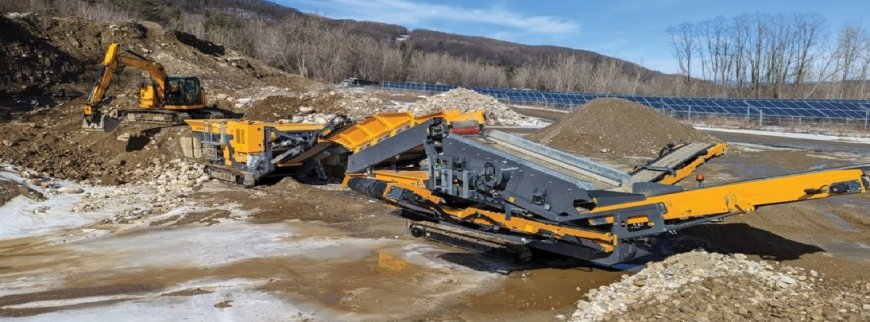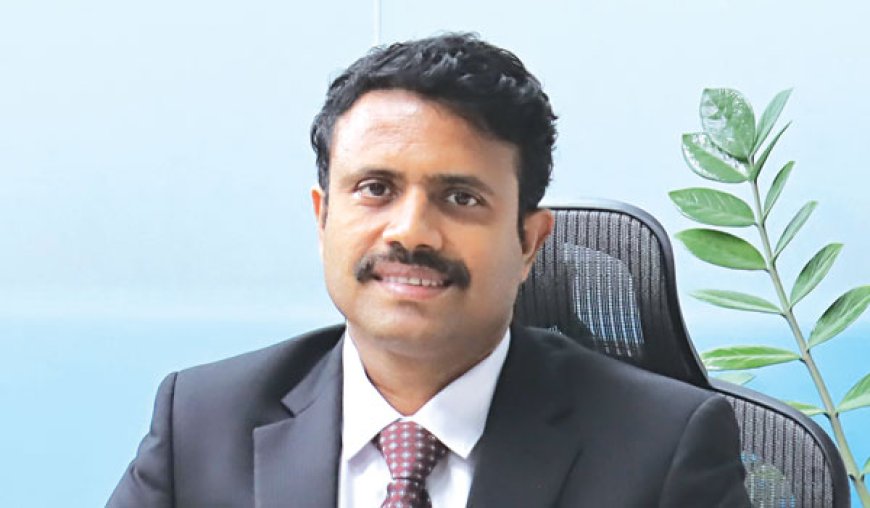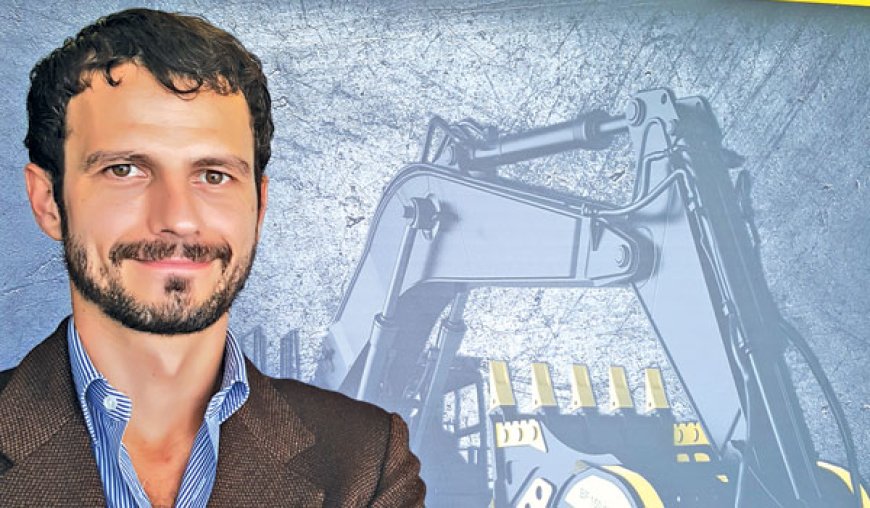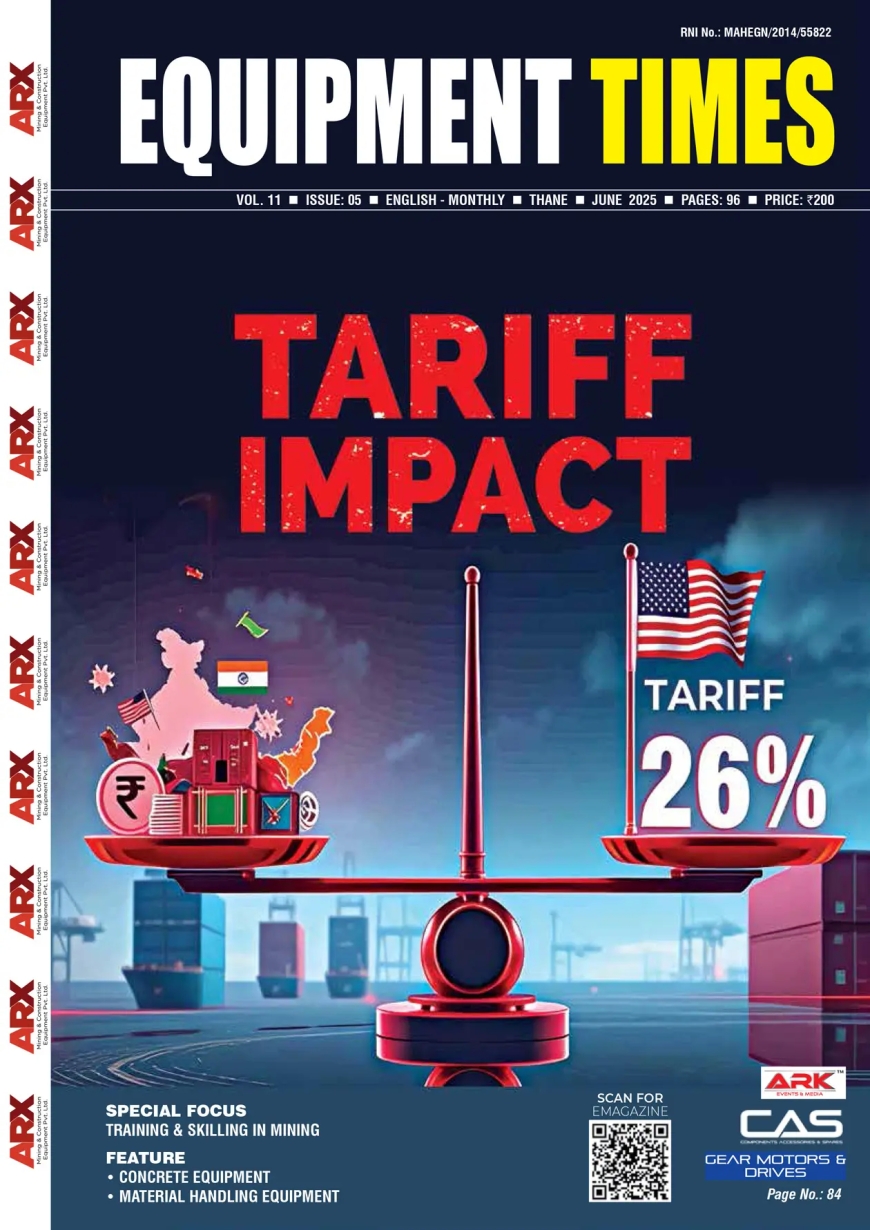CRUSHING Challenges, SCREENING Solutions! The Next Frontier in Crushing & Screening Equipment

Crushing and screening equipment plays a critical role in the construction, mining, and aggregate industries, transforming raw materials into valuable, reusable materials. These machines have evolved significantly over the years, driven by demand for higher efficiency, sustainability, and technological advancements.
Equipment Times explores the current market landscape, demand trends, technological innovations, training initiatives, challenges, and the future outlook for this essential segment of the construction equipment industry.
Crushing and screening equipment has become the backbone of operations, transforming raw materials into the building blocks of modern infrastructure. As the demand for efficiency, sustainability, and innovation grows, this segment of the industry is witnessing significant advancements. From cutting-edge technologies to the rise of mobile and eco-friendly solutions, crushing and screening equipment is playing a pivotal role in shaping the future of construction.
The demand for mobile crushing and screening equipment has surged, especially in urban areas where space constraints and environmental regulations necessitate more versatile and portable solutions. These machines offer the flexibility to move closer to the construction site, reducing transportation costs and carbon footprints. Stationary equipment remains crucial for large-scale mining and quarrying operations, where high capacity and efficiency are paramount.
The global crushing and screening equipment market is witnessing steady growth, fueled by infrastructure development, urbanization, and the expansion of mining activities. In 2023, the market was valued at approximately $2.5 billion and is expected to grow at a CAGR of 4.7% through 2028. Asia-Pacific, particularly China and India, dominates the market due to large-scale infrastructure projects and the booming construction sector. North America and Europe are also significant players, driven by modernization efforts and the need for sustainable construction practices.
Demand Trends…
The increasing focus on recycling and sustainable construction practices is a significant driver of demand in the crushing and screening equipment market. As construction companies strive to minimize waste and reuse materials, there is a growing need for equipment that can efficiently process demolition debris, concrete, and asphalt into reusable aggregates.
In addition, the rise in infrastructure development projects globally, including roads, railways, airports, and urban development, has led to a surge in demand for aggregates, further boosting the market. The mining sector’s expansion, particularly in emerging economies, is another key factor contributing to the growth of this market.
Customization and integration capabilities are also becoming increasingly important. End-users are demanding equipment that can be tailored to specific project needs, with the ability to integrate seamlessly with other construction machinery and digital systems. This trend is driving manufacturers to focus on modular designs and smart technologies.
Technological Innovations
Technological advancements are at the forefront of the crushing and screening equipment market. Manufacturers are leveraging automation, AI, and IoT to enhance machine efficiency, reduce operational costs, and improve safety.
Automation and AI Integration: Modern crushing and screening equipment is increasingly equipped with automated controls and AI-powered analytics. These systems allow for real-time monitoring and adjustments, optimizing performance and reducing downtime. Predictive maintenance, enabled by AI, helps in anticipating equipment failures and scheduling maintenance, thus enhancing the lifespan of the machines.
Hybrid and Electric Solutions: With a growing emphasis on sustainability, manufacturers are developing hybrid and fully electric crushing and screening equipment. These machines not only reduce carbon emissions but also lower operational costs by minimizing fuel consumption. The adoption of renewable energy sources to power these machines is also on the rise, aligning with global efforts to reduce the carbon footprint of construction activities.
Enhanced Mobility and Compact Design: As urban construction sites become more congested, the demand for compact, mobile crushing and screening equipment has increased. Manufacturers are focusing on designing lightweight, easy-to-transport machines that can be quickly deployed on-site. The development of track-mounted equipment is a prime example of this trend, offering greater flexibility and accessibility in challenging environments.
Smart Control Systems: The integration of smart control systems with features like remote monitoring, telematics, and GPS tracking has revolutionized the operation of crushing and screening equipment. These systems enable operators to monitor machine performance, track productivity, and receive real-time alerts, improving overall efficiency and reducing operational risks.
Training Initiatives…
The rapid pace of technological advancements in crushing and screening equipment necessitates continuous training for operators and technicians. Leading manufacturers and industry associations are investing heavily in training programs to ensure that personnel are well-versed in the latest technologies and best practices.
Online Training Modules: The adoption of e-learning platforms has made it easier for operators to access training materials and certification programs. These platforms offer interactive modules, virtual simulations, and assessments, enabling users to gain hands-on experience in a controlled environment.
On-site Training: Many manufacturers provide on-site training sessions where experts train operators on the latest equipment. This hands-on approach ensures that operators are familiar with the nuances of the machines they will be using, leading to safer and more efficient operations.
Certification Programs: Industry-specific certification programs are gaining popularity, offering credentials that validate an operator’s expertise. These certifications are often required by construction companies as a prerequisite for employment, ensuring that only qualified personnel handle advanced machinery.
Challenges…
Despite the positive growth trajectory, the crushing and screening equipment market faces several challenges that could impact its future development.
Stringent environmental regulations, particularly in developed regions, pose a significant challenge to manufacturers. Compliance with emission norms, noise pollution standards, and waste management guidelines often requires additional investments in research and development, driving up production costs. The high cost of advanced crushing and screening equipment can be a barrier to entry for small and medium-sized enterprises. While the long-term benefits and cost savings are substantial, the initial investment remains a significant hurdle for many companies.
As the industry becomes more technologically advanced, the need for skilled operators and technicians has grown. However, the availability of qualified personnel has not kept pace with demand, leading to a skills gap that could hinder the adoption of new technologies.
The market is highly fragmented, with numerous small and medium-sized players competing with large multinational corporations. This fragmentation can lead to intense competition, price wars, and challenges in maintaining consistent quality standards across the industry.
Future Outlook…
The future of the crushing and screening equipment market looks promising, with continued growth expected across key regions. The ongoing trend toward automation, electrification, and sustainability will drive innovation, leading to more efficient and environmentally friendly solutions.
Manufacturers are likely to focus on developing smart, connected equipment that integrates seamlessly with other construction technologies, creating a more cohesive and efficient workflow on-site. The adoption of AI and machine learning for predictive maintenance and performance optimization will become more widespread, further enhancing the reliability and longevity of the equipment.
Industry Voice…

Williams R. J, Managing Director, Hailstone Innovations, said, “With the boom in the infrastructure projects, the need for more crushing and screening equipment is inevitable. The demand is definitely on the rise and the best part is that it has shifted towards environmentally conscious and energy-efficient solutions. More and more customers are opting for mobile and modular equipment so that the challenges of the stationary machines can be addressed. Mobile machines can be reconfigured at different sites and can also be easily transported. Thanks to our highly capable R&D team, Hailstone products have been developed in response to these demands. We always focus on ensuring that our machines offer flexibility, has reduced energy consumption and a smaller carbon footprint.”

Deepak Pandit, Country Manager - India & SAARC, Etrack Crushers (A Keestrack Group Company), said, “Keestrack has always been committed to pushing the boundaries of what’s possible in crushing and screening technology. Our recent innovations include the integration of advanced telematics and automation into our machines. This allows for real-time monitoring, predictive maintenance, and optimized performance across all operations. Our hybrid and fully electric models are designed to deliver high productivity while significantly reducing fuel consumption and emissions, ensuring compliance with the most stringent environmental regulations. Additionally, our equipment is now equipped with smarter control systems that enable more precise adjustments, enhancing both the efficiency and the quality of the final product.”

Piero Guizzetti, CEO, MB Crusher India, said, “The demand for crushing and screening bucket has experienced notable growth in recent years, largely driven by the expansion of infrastructure projects and the increasing emphasis on recycling and sustainability. This trend is particularly evident in India, where the focus on smart cities and large-scale construction initiatives has heightened the need for high-performance, versatile machinery. The growing awareness of environmental impact has further amplified the demand for machines that are both efficient and eco-friendly. We have benefited from this shift, offering innovative solutions that meet these evolving needs. Our equipment is designed not only to deliver superior performance but also to align with the global push towards sustainable practices.”








